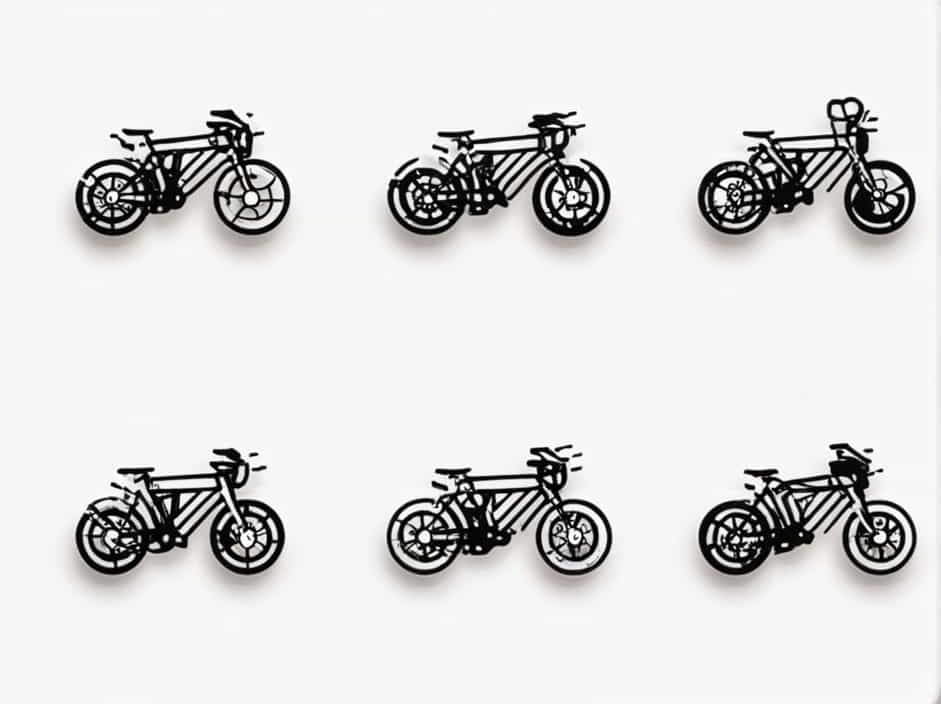A derailleur is a crucial component of a bicycle’s gearing system that allows riders to shift gears smoothly. It moves the chain between different sprockets on the cassette (rear gears) or chainrings (front gears), enabling efficient pedaling in various terrains.
Whether you’re cycling on flat roads, climbing steep hills, or riding on rough trails, the derailleur ensures that you can maintain a comfortable and effective pedaling cadence. Understanding how a derailleur works can help you maintain your bike, improve your ride experience, and troubleshoot common shifting issues.
Types of Derailleurs on a Bike
Bicycles typically have two types of derailleurs:
- Front Derailleur – Moves the chain between chainrings (near the pedals).
- Rear Derailleur – Moves the chain across the cassette (near the rear wheel).
Front Derailleur
The front derailleur is mounted on the bike frame near the crankset. It shifts the chain between two or three chainrings, allowing for large changes in gearing. This is particularly useful for switching between climbing gears (smaller chainrings) and speed gears (larger chainrings).
Rear Derailleur
The rear derailleur is attached near the rear wheel and shifts the chain across multiple cogs on the cassette. It provides finer adjustments in gear ratios, allowing riders to optimize pedaling efficiency for different conditions. The rear derailleur also keeps chain tension proper by using a built-in spring-loaded mechanism.
How Does a Derailleur Work?
A derailleur functions by guiding the chain from one gear to another through precise movements. Here’s a breakdown of how it works:
- Shifter Activation – When you press a gear shifter on the handlebars, the derailleur cable moves.
- Cable Tension Adjustment – The derailleur either moves toward or away from the bike frame, shifting the chain to a different gear.
- Chain Movement – The derailleur’s jockey wheels help guide the chain onto the correct sprocket or chainring.
- Spring Mechanism – The derailleur’s built-in spring maintains chain tension to prevent slippage.
This process allows for seamless gear shifting while riding.
Why Is a Derailleur Important?
The derailleur plays a vital role in ensuring a smooth and efficient ride. Some of its key benefits include:
- Improved Pedaling Efficiency – Helps riders maintain an optimal cadence by adjusting gears based on terrain.
- Better Speed Control – Allows cyclists to increase or decrease resistance as needed.
- Enhanced Climbing Ability – Makes it easier to tackle steep inclines by shifting to lower gears.
- Increased Speed on Flats – Enables riders to shift into higher gears for maximum speed on straight roads.
Without a derailleur, riders would have to manually move the chain between gears, which is inconvenient and inefficient.
Common Derailleur Issues and Troubleshooting
Like any mechanical component, derailleurs can sometimes malfunction. Here are some common problems and how to fix them:
1. Skipping or Slipping Gears
Cause: Misaligned derailleur or worn-out chain.
Fix: Adjust the derailleur using barrel adjusters and check for chain wear.
2. Chain Rubbing Against the Derailleur
Cause: Improper derailleur alignment.
Fix: Fine-tune the limit screws to prevent excessive movement.
3. Slow or Stiff Shifting
Cause: Dirty or rusted cables.
Fix: Lubricate or replace the shift cables.
4. Chain Dropping Off the Gears
Cause: Loose chain tension or bent derailleur hanger.
Fix: Adjust chain tension and inspect the derailleur hanger for damage.
Regular maintenance, such as cleaning and lubricating the derailleur, can help prevent these issues.
How to Maintain a Derailleur for Smooth Shifting
To keep your derailleur in top condition, follow these maintenance tips:
- Clean It Regularly – Remove dirt and grime with a brush and degreaser.
- Lubricate Moving Parts – Apply chain lube to prevent rust and friction.
- Check Cable Tension – Tighten or loosen cables for precise shifting.
- Inspect for Wear and Tear – Replace worn-out jockey wheels and chains.
- Adjust Limit Screws – Prevent the chain from overshooting the gears.
With proper maintenance, a derailleur can last for years without major issues.
Choosing the Right Derailleur for Your Bike
Not all derailleurs are the same. Choosing the right one depends on your bike type and riding style.
1. Road Bike Derailleurs
Designed for smooth, fast shifting with narrow gear ratios. Popular models include Shimano Ultegra and SRAM Red.
2. Mountain Bike Derailleurs
Built for rugged terrain with wide-range cassettes. Examples include Shimano Deore and SRAM GX.
3. Hybrid and Commuter Bike Derailleurs
Focus on durability and ease of use, such as Shimano Tourney.
When upgrading, ensure compatibility with your bike’s drivetrain components.
The derailleur is an essential part of any geared bicycle, allowing for smooth and efficient shifting. Whether you’re a beginner or an experienced cyclist, understanding how it works, how to maintain it, and how to troubleshoot common issues will enhance your riding experience.
By keeping your derailleur clean, well-lubricated, and properly adjusted, you can ensure long-lasting performance and enjoy seamless rides across different terrains.
